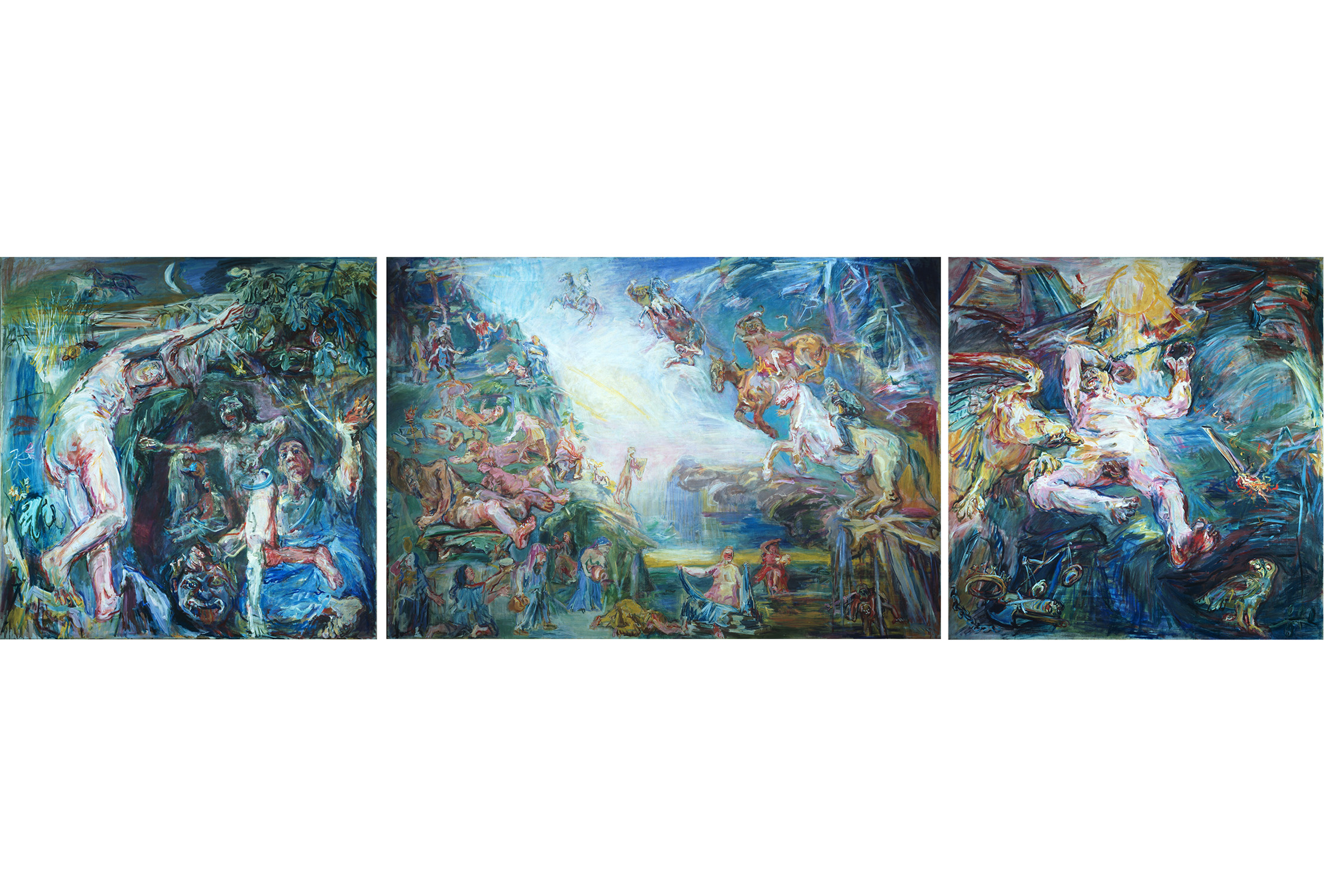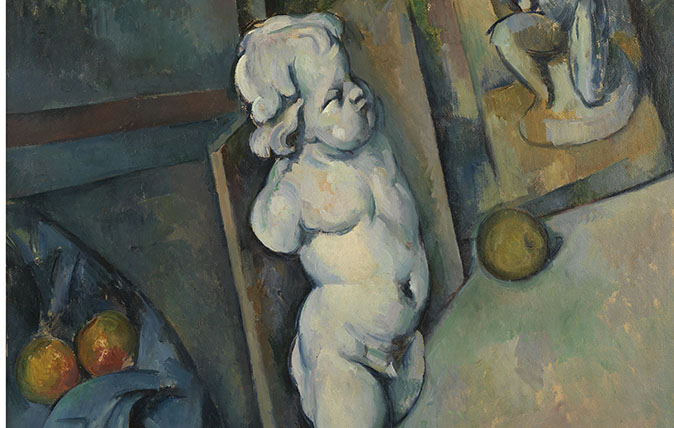My Favourite Painting: Deborah Swallow
Professor Deborah Swallow of the Courtauld Institute chooses an image by Oskar Kokoschka.


Deborah Swallow on Oskar Kokoschka’s Triptych
‘Oskar Kokoschka’s Prometheus has always fascinated me. Now, in a world turned upside down by a global pandemic, with daily reminders of environmental catastrophe, Kokoschka’s engagement with apocalypse, human pride and ambition and his representation of hope through the figure of Persephone speak ever more directly and powerfully to me.
‘Described as the most important Kokoschka in the UK, it was rarely seen in his lifetime and has been seen as rarely since. We will remedy this next year when The Courtauld Gallery re-opens its doors after a major renovation.’
Professoe Deborah Swallow is the Märit Rausing director of The Courtauld Institute of Art
John McEwen on Kokoschka and Triptych
The UK benefited greatly from the European diaspora between the wars, not least in the visual arts. One such refugee was the celebrated Viennese painter, poet, playwright and teacher Oskar Kokoschka. He did not settle, but stayed long enough to become a naturalised subject in 1947.
The ‘Expressionist’ Kokoschka, deemed a degenerate by the Nazis, fled to England via Poland and Sweden in 1938, with the help of the British Committee for Refugees from Czechoslovakia. He stayed until 1953, when he moved to Switzerland. In 1959, he was appointed CBE and he received a Tate Gallery retrospective exhibition in 1962.
This monumental three-part painting is his largest in Britain. It was commissioned by his fellow Austrian émigré, Count Antoine Seilern, for a ceiling in the Count’s London house. It warned against ‘man’s intellectual arrogance’, symbolised by Prometheus (right), ‘whose overweening nature drove him to steal fire so that man could challenge the gods’. Zeus punished Prometheus by chaining him to a rock so an eagle could tear at his liver forever.
In the central panel is a vision of St John’s Apocalypse in the Book of Revelation, with its four horsemen — Conquest, War, Famine and Plague — harbingers of the Last Judgement, heading a storm from the Underworld towards the earth. The left-hand panel offers regeneration: Persephone has sprung from the clutches of Hades (a self-portrait of Kokoschka), who had abducted her, assisted by her mother Demeter, who stands between them.
Seventy years ago, Kokoschka’s fear was that science and technology threatened the freedom and individuality of mankind.

In Focus: The stunning collection of philanthropist Samuel Courtald, including Cézanne's most groundbreaking works
Courtald's collection of Impressionist works returns to The National Gallery for the first time in 70 years. Chloe-Jane Good takes
Exquisite houses, the beauty of Nature, and how to get the most from your life, straight to your inbox.
Country Life is unlike any other magazine: the only glossy weekly on the newsstand and the only magazine that has been guest-edited by His Majesty The King not once, but twice. It is a celebration of modern rural life and all its diverse joys and pleasures — that was first published in Queen Victoria's Diamond Jubilee year. Our eclectic mixture of witty and informative content — from the most up-to-date property news and commentary and a coveted glimpse inside some of the UK's best houses and gardens, to gardening, the arts and interior design, written by experts in their field — still cannot be found in print or online, anywhere else.
